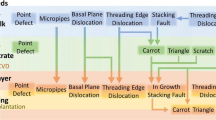Abstract
We review the current understanding of single-event upsets (SEUs) in microelectronic devices. In recent years, SEUs have been recognized as one of the key reliability concerns for both current and future technologies.We identify the major sources of SEUs that impact many commercial products: (1) alpha particles in packaging materials, (2) background radiation due to cosmic rays, and (3) thermal neutrons in certain device materials. The origins of SEUs are examined from the standpoint of the fundamental atomic and nuclear interactions between the intruding particles (alpha particles, cosmic rays, and thermal neutrons) and semiconductor materials.We analyze field funneling, which is a key mechanism of charge collection in a device struck by an ionizing particle. Next, we formulate how SEU cross sections and SEU rates are calculated and discuss how these basic quantities are related to experiments. Finally, we summarize the major SEU issues regarding modeling, bulk complementary metal oxide semiconductor technologies, and research on future, exploratory technologies.
Similar content being viewed by others
References
T. May and M.H. Woods, IEEE Trans. Electron Devices ED-26 (1979) p. 2.
J.F. Ziegler and W.A. Lanford, Science 206 (1979) p. 776.
IBM J. Res. Develop. 40 (1) (1996).
P.J. McNulty, Phys. Today 36 (1983) p. 9.
R.C. Baumann, T.Z. Hossain, S. Murata, and H. Kitagawa, in Proc. 33rd IEEE Int. Reliability Physics Symp. (Institute of Electrical and Electronics Engineers, Piscataway, NJ, 1995) p. 302.
H. Takai, ATLAS High-Energy Physics Collaboration, Brookhaven National Laboratory (private communication); H.Takai and H.H.K.Tang, Brookhaven National Laboratory-IBM Research Preprint (2002), “Single Event Effects in High Energy Physics Environment,” to appear in Nucl. Instrum. Methods.
J.L. Romero, STAR Relativistic Heavy-Ion Physics Collaboration, Brookhaven National Laboratory (private communication).
T.K. Gaisser, Cosmic Rays and Particle Physics (Cambridge University Press, Cambridge, 1990); S. Flugge, ed., Handbuch der Physik, Vol. XLVI/1 (Springer, Berlin, 1961); Handbuch der Physik, Vol. XLVI/2 (Springer, Berlin, 1967).
M.W. Friedlander, A Thin Cosmic Rain (Harvard University Press, Cambridge, MA, 2000).
E. Normand, IEEE Trans. Nucl. Sci. NS-48 (2001) p. 1996.
H.H.K Tang, IBM J. Res. Develop. 40 (1996) p. 91.
E. Segre, Rev. Mod. Phys. 27 (1955) p. 257.
C.M. Hsieh, P.C. Murley, and R.R. O’Brien, IEEE Trans. Electron Devices ED-30 (1983) p. 686.
H.H.K Tang, G.R. Srinivasan, and N. Azziz, Phys. Rev. C 42 (1990) p. 1598.
J.L. Romero, H.H.K Tang, D.J. Morrissey, M. Fauerbach, R. Pfaff, C.F. Powell, B.M. Sherrill, F.P. Brady, D.A. Cebra, J. Chance, J.C. Kintner, and J.H. Osborne, in Proc. 14th Int. Conf. on Application of Accelerators in Research and Industry, Vol. 392, edited by J.L. Duggan and I.L. Morgan (American Institute of Physics, College Park, MD, 1997) p. 655.
H.H.K Tang and J.L. Romero, in Proc. 14th Int. Conf. on Application of Accelerators in Research and Industry, Vol. 392, edited by J.L. Duggan and I.L. Morgan (American Institute of Physics, College Park, MD, 1997) p. 325; H.H.K Tang, in Proc. Int. Conf. on Nuclear Data for Science and Technology, Vol. 12, edited by G. Reffo, A. Ventura, and C. Grandi (Italian Physical Society, Bologna, Italy, 1997) p. 1492.
P. Oldiges, K. Bernstein, D. Heidel, B. Klaasen, E. Cannon, R. Dennard, H. Tang, M. Ieong, and H.-S.P. Wong, in Proc. IEEE Symp. on VLSI Circuits (Institute of Electrical and Electronics Engineers, Piscataway, NJ, 2002) p. 46.
G.R. Srinivasan, H.K. Tang, and P.C. Murley, IEEE Trans. Nucl. Sci. NS-41 (1994) p. 2063; G.R. Srinivasan, P.C. Murley, and H.K. Tang, in Proc. 32nd IEEE Int. Reliability Physics Symp. (Institute of Electrical and Electronics Engineers, Piscataway, NJ, 1994) p. 12.
K. Rodbell, T.H. Zabel, and H. Tang, data taken from IBM Yorktown Tandem Accelerator, 2002 (unpublished).
Rights and permissions
About this article
Cite this article
Tang, H.H.K., Rodbell, K.P. Single-Event Upsets in Microelectronics: Fundamental Physics and Issues. MRS Bulletin 28, 111–116 (2003). https://doi.org/10.1557/mrs2003.37
Published:
Issue Date:
DOI: https://doi.org/10.1557/mrs2003.37




